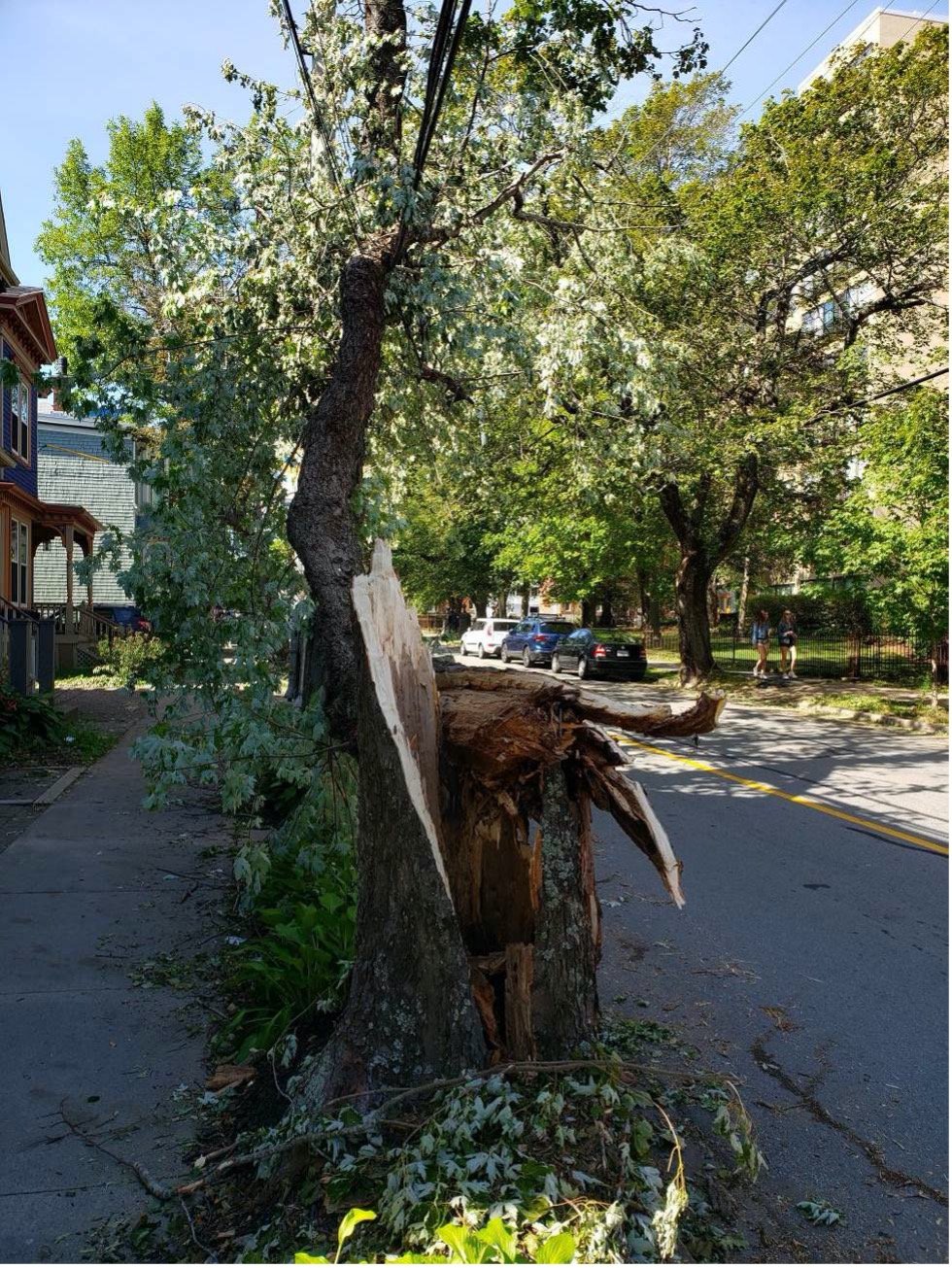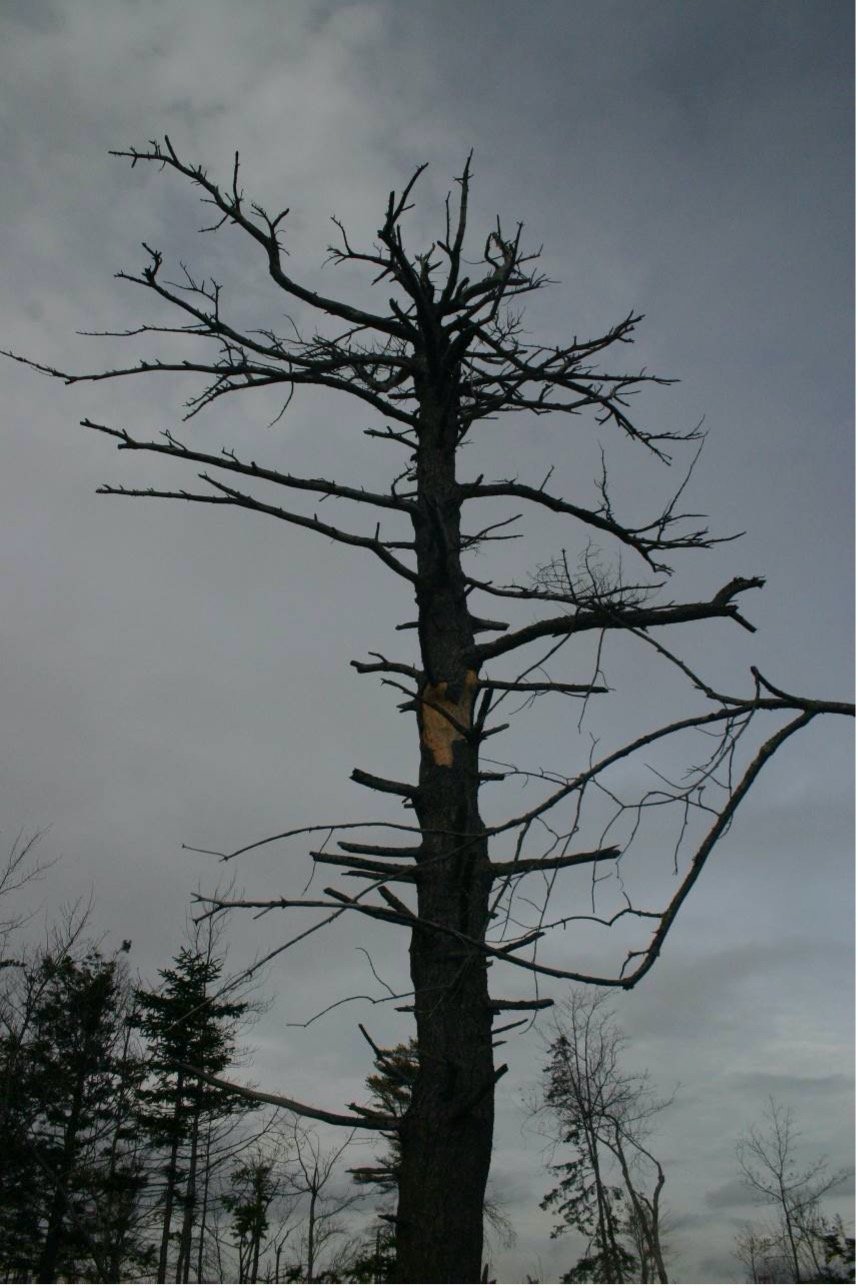Storm Damage as an Agent of Tree Death
Peter Duinker, Halifax Tree Project
2021-10-20
In another article, I spoke of tree death as a consequence of the tree being totally blown down by wind. Here I want to address tree death resulting from storm damage that does not blow a whole tree onto the ground.
My main example here is the tree mortality situation in Point Pleasant Park. Nobody measured precisely how many trees were blown over during Hurricane Juan in late September 2003 but the estimates are that about three-quarters of the park’s mature trees were toppled, probably in less than two hours in the middle of the night. Most of the trees killed were blown down from the roots, but many also broke part way up the stem.
If you had looked carefully across the swaths of tree destruction shortly after the hurricane, you would have noticed that a lot of white pine trees were still standing. Most of them didn’t look very good, having lost various bits and pieces of their crown. I have observed these white pines frequently over the years and noticed that many of them have since died. Why would that happen?
I have three hypotheses for the loss of mature white pines years after the hurricane. One is the loss of neighbouring trees in the stand. Almost all the white pines were growing amongst red spruce trees in more or less fully stocked stands - the trees were close enough to each other that their crowns would touch here and there. When all the red spruces were blown over, the white pines that stayed standing were without neighbours and this situation can bring stress to those remaining trees.
Another hypothesis is that many of the white pines lost enough of their branches that the remaining crown was simply insufficient to continue supporting the life of the entire large organism. Broadleaf trees can often respond to crown loss by growing new crown back - that’s the principle behind the ancient practices of coppicing (cutting stems down to the stump or stool) and pollarding (cutting stems off the tree trunk a few metres from the ground). However, conifers don’t behave like this and have trouble filling out the crown where big branches have been lost. So, the tree can easily go into a slow decline where each year the crown shrinks until the foliage is simply too little to support the tree and the organism dies.
Finally, I hypothesize that even though a white pine tree may have withstood the winds and not fallen down, considerable root damage may have occurred as the tree swayed violently in the wind. Broken roots are unable to rebuild well so the surviving white pines probably were struggling to meet the water and nutrient demands of the crown. Put these three stressors together all at once and it is no wonder that so many of the white pine trees that survived the hurricane have died since. I remind myself every time I visit Point Pleasant Park that the forest ecosystem there will have abundant snags (standing dead trees that provide excellent habitat for birds and cavity-nesting mammals) for decades to come.
The phenomenon of tree breakage from wind also plagues many street trees when we get strong enough storms. Particularly vulnerable, as per my observations, are Norway maples that typically do not have strong branch attachments. In my estimation, while we may have about one-third of our street-tree canopy in Norway maples, after a storm the cleanup operations are dealing mostly Norway maple branches.
Wind is not the only element of weather that can wreak havoc on trees. I have not seen much precipitation damage in Halifax in the decades I’ve lived here, but Ontario and Quebec suffered a major calamity in early January 1998 when their southern reaches received about a hundred millimetres of freezing rain and ice pellets. I travelled to Ottawa shortly after that storm and was shocked at how much of both the rural and urban tree canopy in the area had been damaged by the ice. Many of those trees would have rebounded back to a full crown over the years, but many would also have been killed by the loss of so much crown.
A white pine snag in Point Pleasant Park
A street tree fatally damaged during Hurricane Dorian

